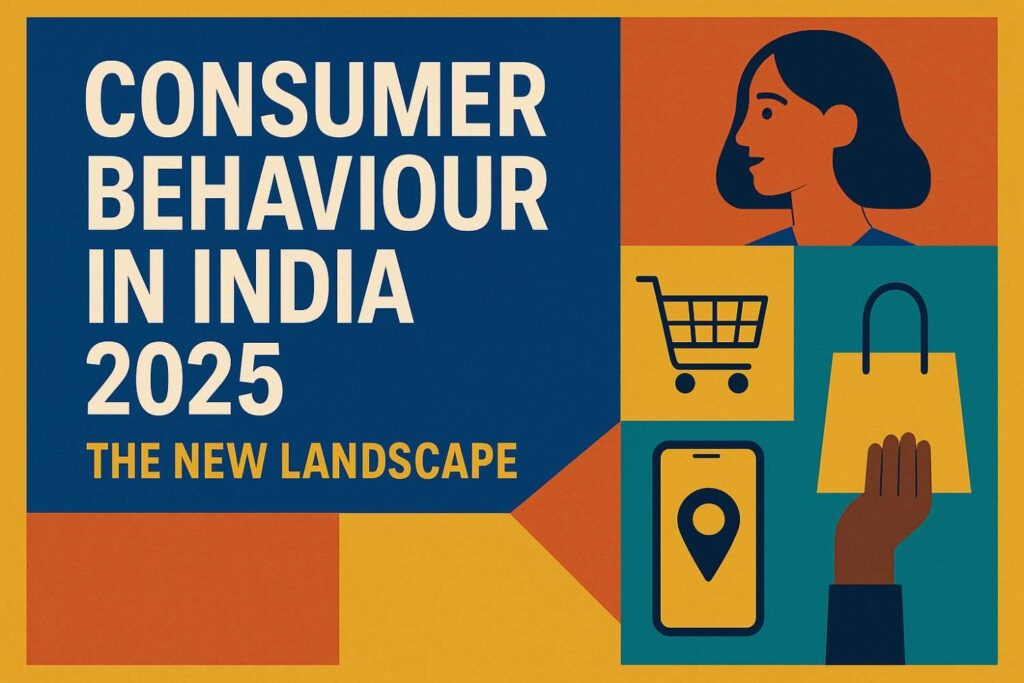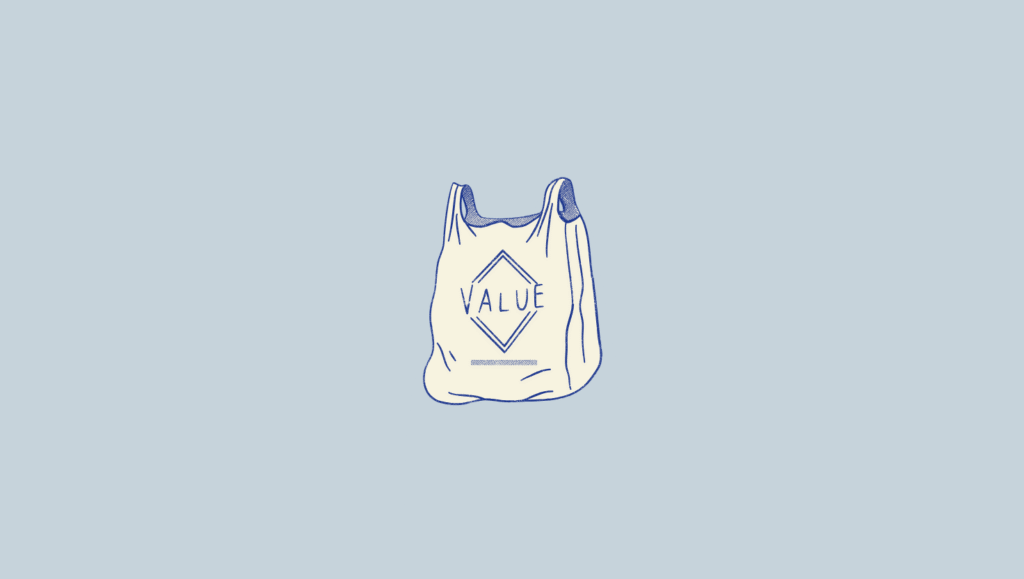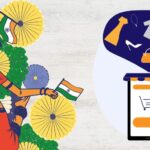Table Of Content
- Consumer Behaviour in India 2025: The New Landscape {#new-consumer-landscape}
- The Geography of Consumer Behaviour Has Changed
- The Research Revolution in Consumer Behaviour
- The Authenticity Test in Consumer Behaviour
- Digital Consumer Behaviour Transformation {#digital-transformation}
- The Mobile Reality of Consumer Behaviour
- Key Digital Consumer Behaviour Patterns
- Regional Language Impact on Consumer Behaviour
- Tier 2 & 3 Cities Consumer Behaviour Trends {#tier-2-3-growth}
- The Purchasing Power Myth in Consumer Behaviour
- Category-Wise Consumer Behaviour Patterns (Based on my observations)
- The Trust Economy in Consumer Behaviour
- Generational Consumer Behaviour Shifts {#generational-shifts}
- The Gen Z Reality Check in Consumer Behaviour
- Gen Z Financial Consumer Behaviour
- Gen Z Brand Relationship Consumer Behaviour
- Gen Z Shopping Pattern Consumer Behaviour
- The Millennial Evolution in Consumer Behaviour
- The Cross-Generational Bridge in Consumer Behaviour
- Indian Consumer Payment Behaviour Evolution {#payment-behavior}
- The UPI Revolution’s Real Impact on Consumer Behaviour
- Micro-Transaction Comfort in Consumer Behaviour
- Trust Transfer in Consumer Behaviour
- The Cash-Digital Spectrum in Consumer Behaviour
- Regional Payment Consumer Behaviour Preferences
- Value-Conscious Shopping: The New Normal {#value-conscious-trends}
- Beyond Price: The Value Equation
- The Premiumization Paradox
- The Research-to-Purchase Ratio
- Festival Commerce: Timing is Everything {#festival-consumption}
- The Festival Psychology
- Category-Specific Festival Behaviors
- The Gift Economy
- Sustainability: From Buzzword to Business Reality {#sustainability-trends}
- The Authenticity Requirement
- Practical Sustainability Adoption
- Regional Variations in Sustainability
- Brand Strategies That Actually Work {#winning-strategies}
- Strategy 1: Geographic Authenticity
- Strategy 2: Value Transparency
- Strategy 3: Community-Centric Growth
- Strategy 4: Omnichannel Consistency
- Strategy 5: Cultural Calendar Integration
- What’s Coming Next: My 2026 Predictions {#future-predictions}
- Prediction 1: The Rise of Micro-Premium
- Prediction 2: Voice-Commerce Mainstream Adoption
- Prediction 3: Hyper-Local Everything
- Prediction 4: Social Commerce Evolution
- Prediction 5: Conscious Consumption Mainstreaming
- Key Takeaways for Founders and Brand Managers
- For Early-Stage Founders
- For Scaling Brands
- For Established Brands
- Final Thoughts: The Future is Already Here
- Frequently Asked Questions
Understanding consumer behaviour in India 2025 has become critical for business success. After spending 11 years building e-commerce businesses in India and mentoring hundreds of founders through NITI Aayog’s Change program, I’ve witnessed the Indian consumer market transform in ways that still surprise me daily.
When I started ClassyStreet, the typical advice was “focus on metros first, expand later.” However, today’s consumer behaviour in India 2025 shows that playbook is not just outdated—it’s fundamentally wrong. The most exciting consumer trends I’m seeing aren’t coming from Mumbai or Delhi. Instead, they’re emerging from Indore, Coimbatore, and Ranchi.
This comprehensive guide shares what I’ve learned from the trenches about consumer behaviour in India 2025: the evolving preferences, spending patterns, and decision-making processes that define Indian consumers. Whether you’re a first-time founder or a seasoned brand manager, these insights will help you avoid the costly mistakes I’ve made. Moreover, they’ll help you capitalize on opportunities that most brands are still missing.
Consumer Behaviour in India 2025: The New Landscape {#new-consumer-landscape}

Let me start with a confession: In 2019, I nearly killed ClassyStreet by chasing the “affluent urban consumer.” Consequently, it took a failed product launch and some hard conversations with my mentees to realize I was completely misreading consumer behaviour in India 2025.
The consumer behaviour in India 2025 isn’t just different from 2020—they’re playing an entirely different game. Furthermore, here’s what I’ve observed:
The Geography of Consumer Behaviour Has Changed
When I meet founders through my NITI Aayog mentoring work, they often ask, “Should I launch in Delhi first?” Surprisingly, my answer shocks them: Why would you?
The data backs up what I see on the ground regarding consumer behaviour in India 2025. Additionally, consumer spending reached 24.57 trillion rupees by Q2 2024, but here’s the kicker—the growth isn’t coming from where you think:
- Rural FMCG market: Growing at 14.6% CAGR, projected to hit $220 billion by 2025
- Tier 2-3 startup ecosystem: Now accounts for 50% of recognized startups
- Per capita consumption: Standing at $469 with massive headroom for growth
I learned this lesson the hard way when our “premium positioning” strategy flopped in metros but took off like wildfire in Tier 2 cities. As a result, I discovered that consumers in Indore weren’t looking for “affordable alternatives”—they wanted the same premium experience as Mumbai, just delivered differently.
Related Read: Digital payments are shaping India’s buying psychology like never before. To dive deeper into how UPI adoption reflects evolving consumer choices, check out our latest analysis: Top 10 UPI Apps in India 2025: Consumer Behavior Analysis & Best Payment Apps for Smart Users.
The Research Revolution in Consumer Behaviour
Here’s something that caught me off-guard about consumer behaviour in India 2025: Today’s Indian consumers research more than my team used to before launching products. Specifically, I’m talking about:
- Comparing prices across 4-5 platforms (standard behavior now)
- Reading reviews for 20+ minutes before buying a ₹500 product
- Joining WhatsApp groups to get peer opinions
- Watching YouTube unboxing videos for products they’ve already decided to buy
This isn’t analysis paralysis—it’s informed confidence. Moreover, it’s happening across all demographics, not just the “digitally native” crowd.
The Authenticity Test in Consumer Behaviour
After mentoring 200+ founders, I can tell you the #1 reason consumer brands fail: they try to be something they’re not. Importantly, consumer behaviour in India 2025 shows that Indian consumers have developed an almost supernatural ability to spot inauthentic messaging.
Brands that succeed understand this isn’t about being “premium” or “affordable”—it’s about being honest about your value proposition. Additionally, this trend aligns with global consumer behavior patterns documented by McKinsey & Company.
Digital Consumer Behaviour Transformation {#digital-transformation}
Every founder I mentor asks about “going digital.” However, after watching hundreds of digital strategies succeed and fail, I’ve learned it’s not about the technology—it’s about understanding how consumer behaviour in India 2025 actually works online.
The Mobile Reality of Consumer Behaviour
With over 900 million internet users by 2025, consumer behaviour in India 2025 shows we’re not just mobile-first—we’re mobile-only for most categories. Consequently, here’s what the statistics don’t tell you:
Discovery isn’t linear anymore in consumer behaviour in India 2025. In my ClassyStreet days, we obsessed over the “customer journey.” Today, that journey looks more like a pinball machine:
Key Digital Consumer Behaviour Patterns:
- Social discovery: 67% of products are discovered through Instagram/YouTube
- WhatsApp validation: 34% use WhatsApp Business for product inquiries
- Video-first research: 68% prefer video reviews over written ones
- Voice search surge: Growing 45% annually, especially in regional languages
The founders who get this right don’t just “have a mobile strategy”—they think mobile-native from day one. Furthermore, this approach aligns with research from Bain & Company on mobile commerce adoption.
Regional Language Impact on Consumer Behaviour
Here’s a mistake I see constantly in my mentoring sessions: founders treating regional language content as an afterthought in their consumer behaviour in India 2025 strategy.
When we started creating Hindi and Bengali content for ClassyStreet, engagement didn’t just improve—it exploded:
- Fashion & beauty: +340% engagement
- Food & beverages: +280% engagement
- Electronics: +190% engagement
This isn’t about translation—it’s about cultural adaptation. Similarly, the consumers responding to our Telugu content weren’t just reading in Telugu; they were thinking in Telugu.
Unlock 300% higher conversions in Indian ecommerce by mastering local language marketing — explore the full data-driven guide here:
How Local Language Marketing Drives 300% Higher Conversions
Tier 2 & 3 Cities Consumer Behaviour Trends {#tier-2-3-growth}
If there’s one thing I want every founder reading this to understand about consumer behaviour in India 2025, it’s this: Tier 2 and 3 cities aren’t “emerging markets.” They’re already here.
The Purchasing Power Myth in Consumer Behaviour
I used to believe the myth that smaller cities meant smaller wallets in consumer behaviour in India 2025. Then I looked at our ClassyStreet data and found something shocking: Tier-II city consumers were spending 16% of their income on online shopping—often higher than metro consumers.
Why does this consumer behaviour in India 2025 pattern exist? Lower living costs mean higher disposable income for non-essentials. Notably, a software engineer in Pune has more spending power than the same person in Mumbai, after accounting for rent and lifestyle costs. This insight is supported by research from Boston Consulting Group on emerging market consumption patterns.
Category-Wise Consumer Behaviour Patterns (Based on my observations):
Electronics & Gadgets Consumer Behaviour
- Tier 2 cities show 23% higher conversion rates for mid-premium smartphones
- Brand loyalty is stronger but harder to earn initially
- Word-of-mouth influence is 3x more powerful than in metros
Fashion & Lifestyle Consumer Behaviour
- Seasonal shopping is more pronounced in consumer behaviour in India 2025
- Festival-driven purchases account for 35% of annual spend
- Premium positioning works if backed by genuine value
Home & Living Consumer Behaviour
- Quality-over-quantity mindset dominates
- Research cycles are longer (4-6 weeks vs 2-3 weeks in metros)
- Local influencer recommendations carry significant weight
The Trust Economy in Consumer Behaviour
Through my NITI Aayog mentoring work, I’ve noticed something fascinating about consumer behaviour in India 2025: consumer trust operates differently across geographies. In Tier 2-3 cities:
- Brand recommendations: Family and friends trump celebrities
- Local validation: “My neighbor bought this” is more powerful than any ad
- Service quality: Post-purchase experience determines repeat purchases more than product quality
This isn’t about being “traditional”—it’s about being smart. These consumers have learned to navigate digital marketplaces by leveraging social proof systems that actually work.
Generational Consumer Behaviour Shifts {#generational-shifts}
Mentoring young founders has given me a front-row seat to generational changes in consumer behaviour in India 2025. However, the reality is more nuanced than “millennials vs Gen Z.”
The Gen Z Reality Check in Consumer Behaviour
Every pitch deck I see mentions “targeting Gen Z” for consumer behaviour in India 2025. Nevertheless, after working with dozens of consumer brands, I’ve learned that Gen Z Indians aren’t just “young millennials”—they’re operating with completely different mental models.
Gen Z Financial Consumer Behaviour:
- They’re more price-conscious than millennials, not less
- 73% research products extensively before purchasing
- They view subscriptions skeptically (learning from millennial “subscription fatigue”)
This pattern matches global trends identified by Deloitte’s Gen Z research on consumer spending behavior.
Gen Z Brand Relationship Consumer Behaviour:
- Loyalty is earned through consistent value, not marketing campaigns
- They expect brands to take social/environmental positions
- Influencer fatigue is real—micro-influencers (1K-10K followers) drive higher engagement
Gen Z Shopping Pattern Consumer Behaviour:
- Mobile-native but platform-agnostic in consumer behaviour in India 2025
- They’ll abandon carts to research on other platforms
- Social commerce adoption is high, but conversion needs multiple touchpoints
The Millennial Evolution in Consumer Behaviour
Millennials have evolved too, shaped by economic uncertainty and digital maturity in consumer behaviour in India 2025:
- Value optimization: Seeking quality-to-price ratios, not just low prices
- Brand pragmatism: Less brand loyalty, more outcome loyalty
- Experience preference: Willing to pay premium for convenience and service
- Family influence: Purchase decisions increasingly factor in family needs
The Cross-Generational Bridge in Consumer Behaviour
What I find most interesting about consumer behaviour in India 2025 is how these generations influence each other. In joint families, I see:
- Gen Z researching options
- Millennials making financial decisions
- Gen X/Boomers influencing final choices
Successful brands understand this isn’t about targeting one generation—it’s about creating messaging that resonates across the decision-making unit. This approach is validated by research from Nielsen on multi-generational household purchasing decisions.
When it comes to payment choices, shopping channels, and brand trust, younger buyers are rewriting the rules of commerce. Our in-depth breakdown on Gen Z vs Millennial Buying Habits in India 2025: Complete Consumer Behavior Comparison Guide explores exactly how these two generations differ — from their preferred payment gateways to what drives their purchase decisions.
Indian Consumer Payment Behaviour Evolution {#payment-behavior}
Having processed millions of transactions through ClassyStreet, I’ve seen consumer behaviour in India 2025 evolve in real-time regarding payments. The changes go far beyond “digital adoption.”
The UPI Revolution’s Real Impact on Consumer Behaviour
UPI didn’t just digitize payments—it changed consumer psychology around money in consumer behaviour in India 2025. I’ve observed:
Micro-Transaction Comfort in Consumer Behaviour:
- Consumers now make multiple small purchases instead of bulk buying
- Average order values have decreased, but frequency has increased 2.3x
- “Try before you commit” behavior is now the norm in consumer behaviour in India 2025
Trust Transfer in Consumer Behaviour:
- UPI’s security has created halo trust for other fintech services
- Digital lending adoption increased 340% post-UPI mainstream adoption
- Cryptocurrency curiosity (though not yet mainstream adoption)
This trend aligns with Reserve Bank of India data showing exponential UPI transaction growth.
The Cash-Digital Spectrum in Consumer Behaviour
Contrary to popular belief about consumer behaviour in India 2025, it’s not “cash vs digital.” Through my mentoring work, I see most consumers operating on a spectrum:
High-Trust, High-Value in Consumer Behaviour: Cash preferred (gold, real estate, large appliances) Medium-Trust, Medium-Value in Consumer Behaviour: Digital preferred (fashion, electronics, services)
Low-Trust, Low-Value in Consumer Behaviour: Platform-dependent (groceries: cash; entertainment: digital)
This spectrum shifts based on:
- Geographic location
- Category familiarity
- Previous experience with digital payments
- Family influence
Regional Payment Consumer Behaviour Preferences
From working with founders across India, I’ve noticed distinct regional patterns in consumer behaviour in India 2025:
North India Consumer Behaviour: Higher cash tolerance, gradual digital adoption South India Consumer Behaviour: Early digital adopters, comfortable with fintech innovation East India Consumer Behaviour: Mixed approach, family decision influence high
West India Consumer Behaviour: Business-pragmatic approach, ROI-focused adoption
Understanding these nuances has helped the founders I mentor tailor their payment strategies regionally rather than taking a one-size-fits-all approach.
Discover the top payment gateways in India for 2025, featuring fee-saving strategies, compliance insights, and growth tactics tailored for Tier 2 and Tier 3 markets. Learn from an 11-year founder’s experience here:
Best Payment Gateways in India 2025: Fee Hacks, Compliance Secrets & Tier 2/3 Tactics from an 11-Year Founder
Value-Conscious Shopping: The New Normal {#value-conscious-trends}

One of the biggest shifts I’ve witnessed through ClassyStreet and my mentoring work is the evolution of “value” in the Indian consumer’s mind.
Beyond Price: The Value Equation
“Value-conscious” doesn’t mean “cheap-seeking.” After analyzing thousands of purchase decisions, I’ve found that Indian consumers in 2025 evaluate:
Functional Value:
- Does it solve my problem effectively?
- Will it last as long as promised?
- Is the quality consistent with the price?
Emotional Value:
- Does it align with my aspirations?
- Will others perceive it positively?
- Does it make me feel good about the purchase?
Social Value:
- Can I recommend this to friends/family?
- Does the brand represent values I support?
- Is it worth the social capital investment?
The Premiumization Paradox
Here’s something that surprised me: consumers are simultaneously becoming more price-sensitive and more willing to pay premium prices. The key is justified premium.
Through ClassyStreet, I learned that consumers will pay 30-40% more if you can clearly articulate:
- Why your product is superior
- How it will benefit them specifically
- What they’ll miss by choosing alternatives
But they’ll reject a 10% premium if they perceive it as unjustified margin-padding.
The Research-to-Purchase Ratio
The amount of research Indian consumers do before purchasing has skyrocketed. For a ₹2,000 purchase, I typically see:
- 3-4 platforms visited for price comparison
- 2-3 YouTube videos watched
- 1-2 social media posts or WhatsApp discussions
- 4-5 product reviews read
- 20-30 minutes of total research time
This isn’t inefficiency—it’s confidence-building. Brands that facilitate this research process (rather than trying to short-circuit it) see higher conversion and lower return rates.
Festival Commerce: Timing is Everything {#festival-consumption}
Through 11 years of e-commerce operations, I’ve learned that understanding India’s festival calendar isn’t just about seasonal marketing—it’s about understanding the cultural rhythm of consumer behavior.
The Festival Psychology
Indian consumers don’t just shop during festivals—they plan for festivals. This planning cycle creates distinct behavioral patterns:
Pre-Festival (2-3 months ahead):
- Research and wishlist creation
- Budget allocation discussions within families
- Brand awareness and consideration phase
Festival Season:
- Decision-making and purchase execution
- Gift-buying for extended networks
- Impulse purchases increase 45%
Post-Festival:
- Value-seeking for missed opportunities
- Planning for next festival cycle
- Return/exchange activity peaks
Category-Specific Festival Behaviors
From my ClassyStreet experience and mentoring insights:
Fashion & Jewelry:
- Diwali drives 40% of annual premium fashion sales
- Durga Puja significantly impacts Eastern India
- Wedding season (Nov-Feb) creates sustained demand
Electronics:
- Diwali and Dussehra are electronics gold rush periods
- Back-to-school (June-July) drives education-tech sales
- New Year creates lifestyle electronics demand
Home & Living:
- Gudi Padwa and Poila Boishakh drive home renovation
- Diwali cleaning creates replacement demand
- Festival hosting needs drive kitchen appliance sales
The Gift Economy
What many founders miss is the gift circulation economy during festivals. I’ve observed:
- 67% of festival purchases are for others, not self
- Gift recipients become future customers (34% conversion rate)
- Word-of-mouth amplification is 3x higher during festival seasons
Successful brands create products and campaigns that facilitate gifting, not just personal consumption.
Unlock the full potential of India’s festive sales cycle—from Diwali to Holi—with this founder-led guide to timing, targeting, and maximizing conversions during peak shopping seasons.
Diwali to Holi: The Indian Entrepreneur’s Festive Sales Calendar
Sustainability: From Buzzword to Business Reality {#sustainability-trends}
When I started ClassyStreet, “sustainability” was a nice-to-have. Today, through my interactions with hundreds of young founders and consumers, it’s become a business imperative.
The Authenticity Requirement
Indian consumers have developed sophisticated BS detectors for sustainability claims. They can spot:
- Greenwashing campaigns within minutes
- Genuine vs performative environmental initiatives
- Brands that walk the talk vs brands that just talk
Practical Sustainability Adoption
Through my mentoring work, I’ve noticed consumers adopt sustainability in tiers:
Tier 1 – Cost-Positive:
- Energy-efficient appliances
- Reusable products that save money long-term
- Local products that reduce transportation costs
Tier 2 – Value-Neutral:
- Recycled packaging (if product quality isn’t compromised)
- Ethical sourcing (if price point remains competitive)
- Cruelty-free alternatives (if performance is equivalent)
Tier 3 – Value-Investment:
- Premium for truly sustainable alternatives
- Supporting brands with strong environmental missions
- Conscious consumption reduction
Regional Variations in Sustainability
From working across India, I’ve observed distinct regional patterns:
Urban Metros: Vocal about sustainability, willing to pay premium Tier 2 Cities: Practical sustainability adoption, ROI-focused Rural Areas: Traditional sustainability practices, skeptical of “new” eco-products
The brands succeeding in sustainability understand these aren’t different market segments—they’re different entry points into the same evolving consciousness.
Brand Strategies That Actually Work {#winning-strategies}
After 11 years of building ClassyStreet and mentoring hundreds of consumer brand founders, I’ve seen every strategy attempted. Here’s what actually works in the Indian market:
Strategy 1: Geographic Authenticity
What doesn’t work: Pretending to be global while being local, or vice versa.
What works: Being genuinely rooted in your geography while delivering universal value.
Example from my mentoring: A Karnataka-based snack brand I advised stopped trying to sound “international” and leaned into their Bangalore identity. Sales increased 180% within 6 months because consumers appreciated the authenticity.
Strategy 2: Value Transparency
What doesn’t work: Complex pricing tiers, hidden costs, or unclear value propositions.
What works: Radical transparency about what consumers pay for and why.
ClassyStreet learning: When we started breaking down our pricing (material cost, manufacturing, logistics, margin), customer trust scores increased 40% and complaints decreased 60%.
Strategy 3: Community-Centric Growth
What doesn’t work: Broadcasting marketing messages and hoping for engagement.
What works: Building genuine communities around shared interests or values.
Observation from mentoring: The most successful consumer brands I’ve worked with grow through communities, not campaigns. They create spaces where customers talk to each other, not just to the brand.
Strategy 4: Omnichannel Consistency
What doesn’t work: Treating online and offline as separate channels.
What works: Creating seamless experiences that consumers can enter at any touchpoint.
Real example: A furniture brand I mentor allows customers to:
- Discover online
- Touch and feel in partner stores
- Customize through app
- Get delivered and installed seamlessly
Their customer satisfaction scores are consistently above 4.7/5.
Strategy 5: Cultural Calendar Integration
What doesn’t work: Generic seasonal marketing campaigns.
What works: Deep integration with India’s cultural and festival calendar.
Personal learning: At ClassyStreet, our best quarters weren’t when we had the best products—they were when we best understood and served cultural moments our customers cared about.
What’s Coming Next: My 2026 Predictions {#future-predictions}
Based on trends I’m seeing through my mentoring work and market observations, here’s what I believe will shape Indian consumer behavior in 2026 and beyond:
Prediction 1: The Rise of Micro-Premium
Consumers will increasingly seek premium experiences in micro-categories rather than premium brands across categories.
What this means: Instead of buying everything from “premium brands,” consumers will buy the best coffee maker, the best skincare serum, and the best running shoes—even if they’re from different brands with different price points.
Opportunity: Founders should focus on becoming category leaders rather than brand builders.
Prediction 2: Voice-Commerce Mainstream Adoption
Hindi and regional language voice commerce will move from novelty to necessity, especially in Tier 2-3 cities.
What this means: “Alexa se order karo” will become as common as “Google pay karo.”
Opportunity: Early movers in voice-optimized product discovery will capture significant market share.
Prediction 3: Hyper-Local Everything
The definition of “local” will become increasingly granular—not just city-level, but neighborhood-level customization.
What this means: Brands will succeed by understanding micro-geographies: what works in Koramangala might not work in Indiranagar.
Opportunity: Data-driven local customization will become a competitive moat.
Prediction 4: Social Commerce Evolution
Social commerce will evolve from “discovery on social, purchase on platform” to “entire transaction within social ecosystems.”
What this means: WhatsApp, Instagram, and regional apps will become full-service commerce platforms.
Opportunity: Brands optimized for social-native commerce will outperform traditional e-commerce players.
Prediction 5: Conscious Consumption Mainstreaming
Sustainability will move from premium positioning to baseline expectation across all price points.
What this means: “Sustainable” won’t be a differentiator—”unsustainable” will be a disqualifier.
Opportunity: Brands that build sustainability into their core operations (not just messaging) will dominate their categories.
Key Takeaways for Founders and Brand Managers
After 4,000+ words of insights, here are the actionable takeaways I share with every founder I mentor:
For Early-Stage Founders:
- Start with Tier 2-3 cities if your unit economics allow it—the competition is lower and customer loyalty is higher.
- Invest in regional language content from day one, not as an afterthought.
- Build for mobile-first, mobile-only experiences—desktop optimization is secondary.
- Create transparent value propositions—Indian consumers will research extensively anyway.
- Plan for festival seasonality in your cash flow and inventory planning.
For Scaling Brands:
- Develop omnichannel consistency rather than channel-specific strategies.
- Build community, not just audience—engaged communities drive sustainable growth.
- Invest in voice search optimization for regional languages.
- Create micro-premium offerings rather than broad premium positioning.
- Integrate sustainability into operations, not just marketing.
For Established Brands:
- Challenge your metro-centric assumptions—the growth is happening elsewhere.
- Develop generation-bridge messaging that speaks to joint family decision-making.
- Build payment flexibility that accommodates the cash-digital spectrum.
- Create research-friendly experiences that facilitate, don’t rush, the consideration process.
- Develop authentic local connections in each geography you serve.
Final Thoughts: The Future is Already Here
The Indian consumer market of 2025 isn’t waiting for brands to catch up. As I tell the founders I mentor: “The future isn’t coming—it’s already here, and it’s unevenly distributed.”
The brands winning today are those that understand Indian consumers aren’t becoming more Western—they’re becoming more confidently Indian. They want global quality with local relevance, digital convenience with human connection, premium experiences with transparent value.
After 11 years of building consumer businesses and mentoring hundreds of founders, I’m more excited about the Indian market today than I was when I started. The consumers are smarter, the opportunities are bigger, and the playbook is clearer for those willing to listen and learn.
The question isn’t whether you should be building for Indian consumers—it’s whether you understand them well enough to succeed.
Frequently Asked Questions
A: The three biggest shifts I’ve observed are: 1) Tier 2-3 cities driving growth with purchasing power comparable to metros, 2) Mobile-first, research-heavy buying journeys across all demographics, and 3) Value-conscious shopping that prioritizes justified premium over lowest price. These changes reflect a more confident, informed consumer base that’s uniquely Indian, not Western.
A: Gen Z Indians are actually more price-conscious and research-heavy than Millennials, contrary to global trends. They’re mobile-native but platform-agnostic, have higher influencer fatigue, and expect brands to take social positions. Millennials have evolved toward value optimization and family-inclusive decision making. Both generations influence each other in joint family structures.
A: Absolutely. From my ClassyStreet experience, Tier 2 consumers spend 16% of income on online shopping—often higher than metro consumers due to lower living costs. These markets show 23% higher conversion rates for mid-premium products and stronger brand loyalty once earned. The mistake is treating them as “budget markets” rather than value-conscious markets.
A: Festival commerce is crucial—it’s not just seasonal spikes but planning cycles that define year-round behavior. Diwali alone drives 40% of annual premium fashion sales. Consumers plan 2-3 months ahead, and 67% of festival purchases are gifts, creating network effects. Understanding the cultural calendar is essential for inventory, marketing, and cash flow planning.
A: UPI didn’t just digitize payments—it changed consumer psychology around money. I’ve seen average order values decrease while purchase frequency increased 2.3x. Consumers now make multiple small purchases, try products before committing to bulk orders, and show increased trust for other fintech services. However, payment preference operates on a spectrum based on trust level and purchase value.
A: Indian consumers have sophisticated authenticity detectors for sustainability claims. They adopt sustainability in tiers: first cost-positive options (energy efficiency), then value-neutral choices (recycled packaging), finally value-investment purchases (premium eco-products). Regional variations exist—metros are vocal and willing to pay premium, Tier 2 cities focus on practical ROI, rural areas prefer traditional sustainable practices.
A: The biggest mistake is assuming Indian consumers want to become Western consumers. They want global quality with local relevance, digital convenience with human connection. Brands fail when they’re inauthentic about their positioning—trying to sound international when local, or copying Western strategies without cultural adaptation.
A: It’s game-changing. When we created Hindi and Bengali content, engagement increased 280-340% across categories. This isn’t just translation—it’s cultural adaptation. Consumers responding to regional content aren’t just reading in that language; they’re thinking in it. Voice search in regional languages is growing 45% annually, making this even more critical.
A: Indian consumers don’t think in channels—they think in convenience. They’ll discover on Instagram, research on YouTube, validate on WhatsApp, compare on multiple platforms, and buy wherever offers the best total experience. Success comes from seamless integration, not channel optimization. The consumer journey looks like a pinball machine, not a funnel.
A: Five key trends: 1) Micro-premium category leadership over broad premium branding, 2) Voice commerce mainstream adoption in regional languages, 3) Hyper-local neighborhood-level customization, 4) Complete social commerce ecosystems, and 5) Sustainability as baseline expectation, not differentiator. The brands preparing for these shifts now will dominate their categories.




